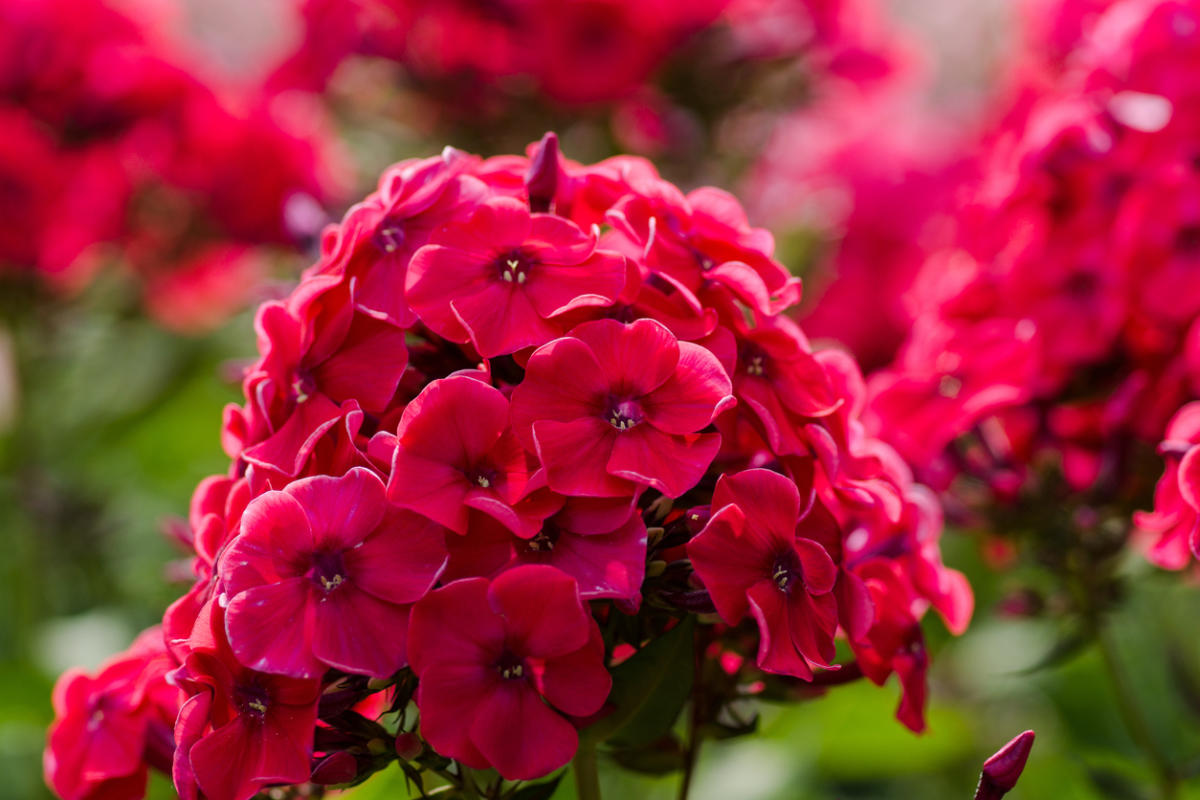Phlox - elegant and bright flowers belong to the cyanotic family. In addition to high decorative qualities, they have unpretentiousness and the ability to grow on all kinds of soils with different illumination. Moreover, phloxes are able to hold out for a long time in cut form, becoming a decoration of the room. These are perennials wintering in the garden. The types of phlox are varied and differ from each other in the height of the bush, as well as in color, which is indispensable when creating flower arrangements.
Content
Views
The following types of phlox are most popular with florists:
Phlox paniculata
 Blooms in late August, early September... The variety is distinguished by fragrant flowers and large inflorescences of various colors: white, pale and bright shades of pink, lilac, purple. There are no yellow tones in the scale. There are hybrids of paniculate phlox with flowers painted in multi-colored stripes.
Blooms in late August, early September... The variety is distinguished by fragrant flowers and large inflorescences of various colors: white, pale and bright shades of pink, lilac, purple. There are no yellow tones in the scale. There are hybrids of paniculate phlox with flowers painted in multi-colored stripes.
The bushes of the paniculate phlox are lush, forming a large number of leaves on the stems, the bush itself is from 40 cm to 1 meter in height. With age, the plant acquires twenty or more shoots.
Paniculate phlox is able to bloom almost all season. You can pick up varieties and hybrids that bloom in the summer, autumn (September).
Phlox subulate
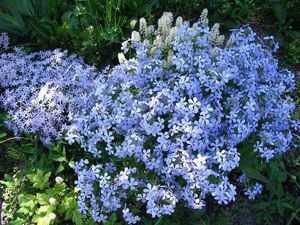 This species has a low stem of 10–15 cm, on which a small inflorescence of 2–4 soft lilac or mauve flowers is formed. Branching stems, each shoot forms flowers, therefore phlox subulate covers the soil surface with a carpet, a flowering pastel shade, lying down in dense soddy bushes. Therefore, this species has another name - sod phlox. Flowers appear early, around May or June.
This species has a low stem of 10–15 cm, on which a small inflorescence of 2–4 soft lilac or mauve flowers is formed. Branching stems, each shoot forms flowers, therefore phlox subulate covers the soil surface with a carpet, a flowering pastel shade, lying down in dense soddy bushes. Therefore, this species has another name - sod phlox. Flowers appear early, around May or June.
The subulate phlox is so named due to its peculiar leaves, which look like needles. They are small in size, leathery and pointed.
It is mainly used for curbs, can be grown in pots and flower baskets. The plant lends itself well to shearing, so various geometric shapes can be formed from it.
Phlox Douglas
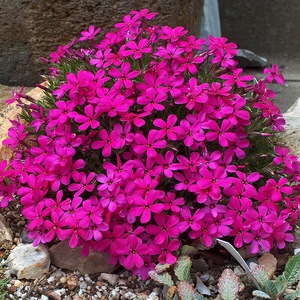 The plant is undersized, reaching only 5 cm in height. Therefore, it is excellent for growing a living carpet. Zand the season blooms 2 times, in May-June and autumn. This species has gray-green narrow leaves, flowers can be formed in white, blue, lavender and pink.
The plant is undersized, reaching only 5 cm in height. Therefore, it is excellent for growing a living carpet. Zand the season blooms 2 times, in May-June and autumn. This species has gray-green narrow leaves, flowers can be formed in white, blue, lavender and pink.
Another low and early flowering species is creeping phlox. It rises 15–20 cm above the surface. Plant stems branch profuselyforming umbellate inflorescences. Some species can produce up to 10 of them. Flowering occurs in May, early June, the flowers are bright: pink, red and purple.
Phlox canadian
Another name for splay. This plant belongs to the medium height, the stem height is from 15 to 40 cm, the flowers are formed larger than the above species. The color of the flowers is white and bluish-lilac soft tone, gather in large umbrellas with a diameter of about 10 cm.The plant does not form seeds. Blooms at the same time - May-June.
This species needs good soil, does not develop well on soils with peat and forest. For the plant to become perennial, it should be offered light soil with humus. The substrate should not be with manure, peat, leaves.
Most of all, gardeners love to grow paniculata phlox, however, the other species described are no worse. Early flowering low-growing phlox are very good for spring cultivation in garden plots that are located in different climatic conditions. They look spectacular, perfectly decorate the territoryforming blooming carpets, their greenery retains its fresh appearance until the very frost. The above phlox look great in rockeries and alpine slides. How to grow phlox in the garden? What are the landing and grooming rules?
Perennial phlox: planting and care, photo
In order to grow beautiful flowers, see the photo, you must adhere to the following points in care:
- Phlox flowers grow on any soil, however, it is better if it is light loamy. The development of the plant is best affected by the addition of lime to the ground.
- In the fall, if you are planning to plant phlox, the site should be dug deep. For spring flowering and low varieties, in addition, it will be necessary to clear the land of weeds, since it will be difficult for such species to deal with unnecessary vegetation, especially in the first year.
- It is necessary to plant plants in a sunny area in the garden. The exception is hybrids with bright flowers, since the color can fade, they are planted in partial shade.
- Phloxes, on which dark flowers are formed, look favorably with a number of growing light-colored ones. Because in the evening they will begin to shade at the expense of their bright fellows, and not "get lost" in the dark.
- Taking care of phlox is quite simple, you just need to clear the soil of weeds and loosen the ground. Abundant flowering is ensured by regular fertilization.
- Phlox paniculata is able to grow not only under sunlight, but also in partial shade. Low-growing species are best planted in well-lit places, but they can also grow in partial shade, without losing their decorative effect. For the plants to grow, you need to feed them regularly.
- Phloxes are watered abundantly, but infrequently if the surrounding conditions are not very arid. If the soil quickly becomes dry, then watering should be repeated often. It is better to water the plants in the afternoon.
- Phloxes are capable of forming seeds, as in the photo, but not all varieties are capable of this. Even phlox, which can multiply by seed, does not always form them. The reason for this may be the low air temperature, at which the formation of sterile pollen occurs. If the plant is dug up and brought indoors, it can produce normal pollen, after artificial insemination, in this case, seeds will appear.
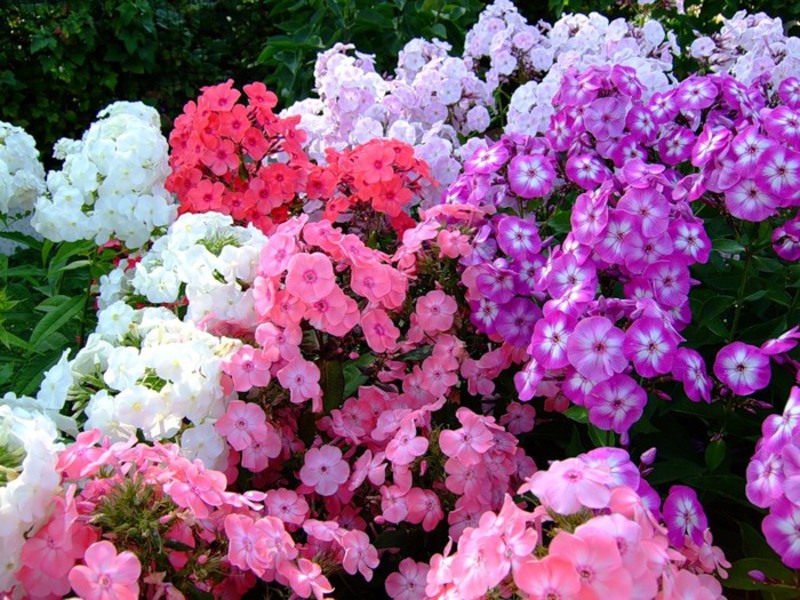
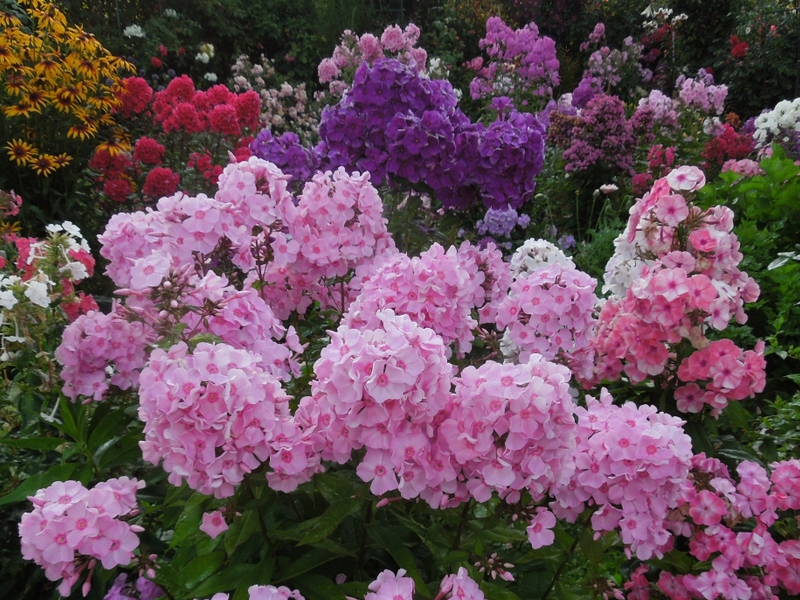
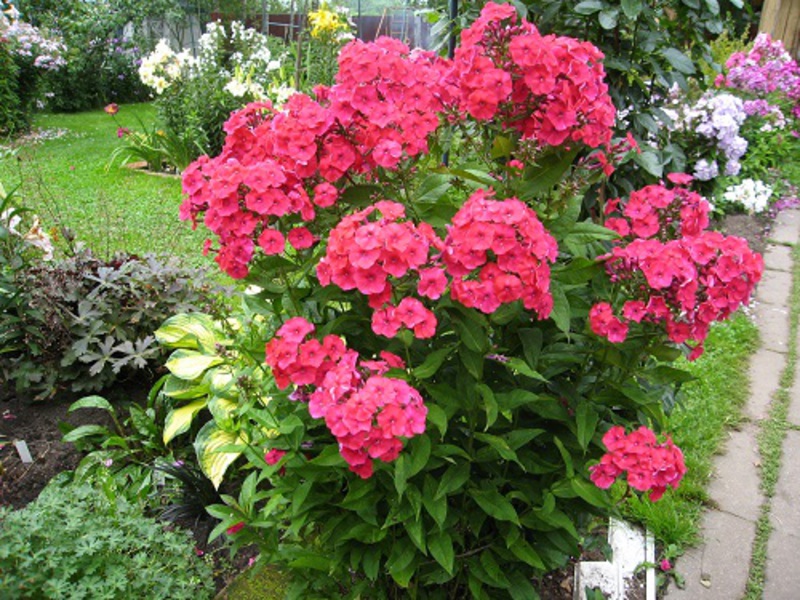
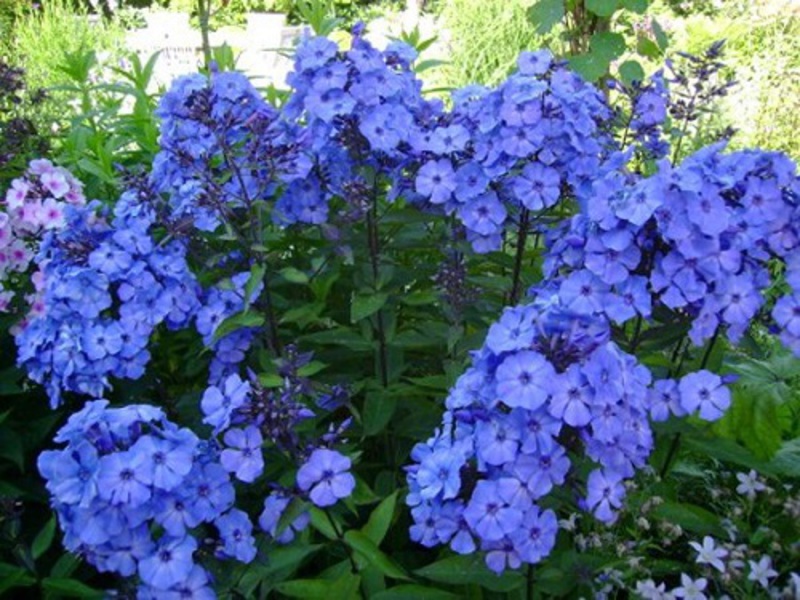
Autumn care
Before freezing, young and adult bushes should be covered with earth and covered with a layer of manure or humus, the thickness of which should be 8–12 cm. This is done to to protect the kidneyslocated in the ground from freezing. This protection is especially important for cuttings that have been planted in the current year.
If phloxes often suffer from fungal diseases, in October, after the flowering period, the plant must be treated with fungicides for prevention.
If the bush has formed seeds, but they did not have time to ripen well, since frosts began, then the plant can be dug out, plant in pots and transfer to the housethan help him in ripening seeds.
In the fall, transplant and rejuvenation of phloxes are carried out, as is carried out, read the following sections.
Transplant and rejuvenation
When to transplant? Paniculate phlox is a perennial plant that can grow in one place for more than 15 years. Young shoots are formed on the periphery of the bushand the center becomes old.In this regard, every 5-7 years, the bush is rejuvenated by replacing old shoots with young ones or simply planted.
Division of bushes
The bush is divided for the normal development of the plant. It is carried out every 5-7 years, but it can be done earlier, after 3-4 years. The division is carried out at any time of the year, except for winter. To do this, the bush needs:
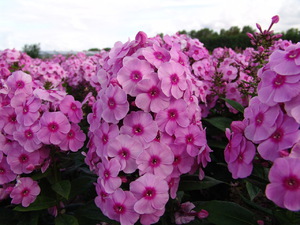 Dig in from all sides, remove it, cut off the shoots, leaving 10-15 cm.
Dig in from all sides, remove it, cut off the shoots, leaving 10-15 cm.- Then cut it into pieces with an ax, shovel or sharp knife. Each part must have 2–5 buds for future growth. Phlox's root system is quite developed, its length is up to 15 cm.
- Pits for future planting are prepared in advance so that the soil settles. If the planting is done in the spring, it is done in the fall, if it is supposed to be planted in the summer or autumn, then two weeks before the procedure.
- The bushes are planted at a distance of 60 cm, if the phlox is tall, in the case of a different height, the distance is reduced.
- Compost is lowered into the pits, half a bucket for each, mineral fertilizer is added. In the autumn planting period, nitrogen fertilizers are not applied. Ash is good as a potassium fertilizer. If the soil has an acidic reaction, add 1 glass of lime, since phlox grows on soils with a reaction of 5 to 7 pH. To avoid scalding the root system, all components are mixed well.
- The pits need to be filled with water and a divided part of the bush planted in them. Sprinkle with earth so that the buds of growth are covered by 3-5 cm. After that they are tamped, a layer of compost is added and tamped again.
- The top is covered with a layer of mulch, consisting of peat, leaf humus, leaf litter, the thickness of all this is 10 cm. Mulching can improve the rooting of the delen. Please note that in the autumn period of dividing the bush, it is important that phloxes have time to take root before frost.
Reproduction
Phlox is propagated by green cuttings, autumn cuttings or seeds.
Green cuttings
At the end of May, you should start harvesting green cuttings. At this time, phloxes will reach a height of 12-15 cm. You can carry out cuttings later, since it runs until mid-July, but, as a rule, late cuttings do not take root well.
 Shoots are cut, at least 2 well-developed buds should remain on the mother's part.
Shoots are cut, at least 2 well-developed buds should remain on the mother's part.- After that, the entire stalk is immersed in water for an hour. This allows you to reduce the percentage of rooting in the first days after planting, and after this procedure, the cutting root is better. However, it should not be kept in water for more than an hour.
- Before planting, the stalk must be cleaned of the lower leaves, shorten the rest to half, make a cut under the bud. The finished cutting should be 6–10 cm long. The cuttings are processed in the shade to avoid sticking.
- Cuttings are planted in open ground in the shade or greenhouse. If you cover them with a layer of wet paper after planting, they will take root better. It is deepened into the ground by 1–1.5 cm; the ground around it needs to be slightly compacted. Rooting occurs in a week or two.
Autumn cuttings
Harvesting of autumn cuttings is carried out in August or September. Parts of the shoots of the current year are cut off, the cuttings are processed in the same way as described in the previous section. Rooting takes place in greenhouses or heated greenhouses. In the spring, overwintered plants will delight with abundant flowering... When planted in a permanent place, the cuttings should be well buried so that the largest number of buds falls on the underground part. Thanks to this, phloxes winter well, and in the spring their active development will begin.
Growing from seeds
Phlox seeds usually germinate well. As a rule, they are sown in the fall in open ground. You can sow seeds in winter, for this boxes with crops are taken out in the cold for monthly stratification... After that, they are brought into the room for thawing, then the seeds begin to sprout together.
Phlox are the most beautiful and grateful flowers. They will become a decoration of the garden plot with the least labor costs and minimum maintenance on your part.


